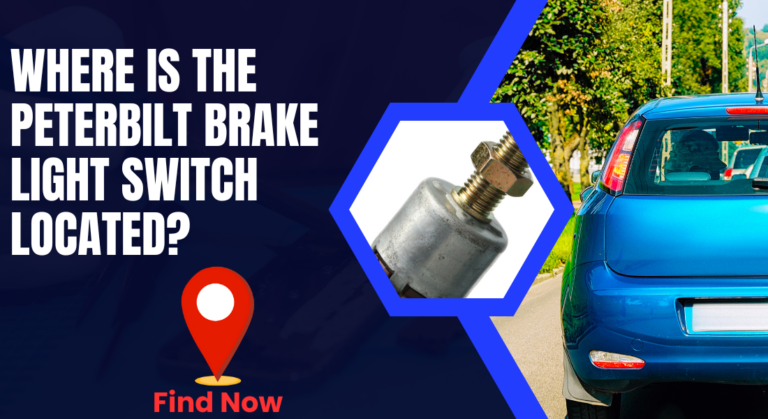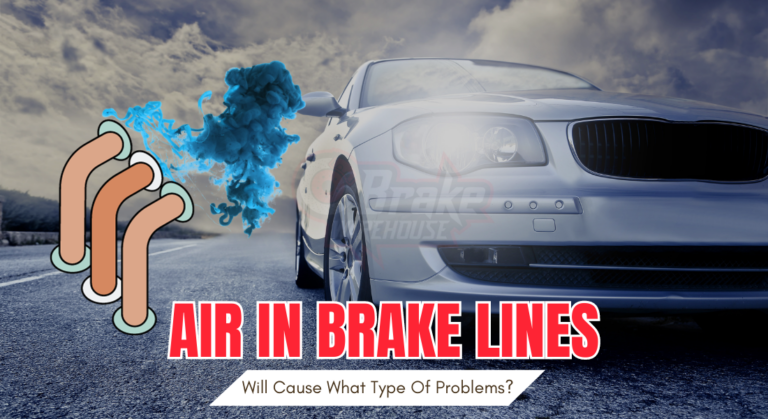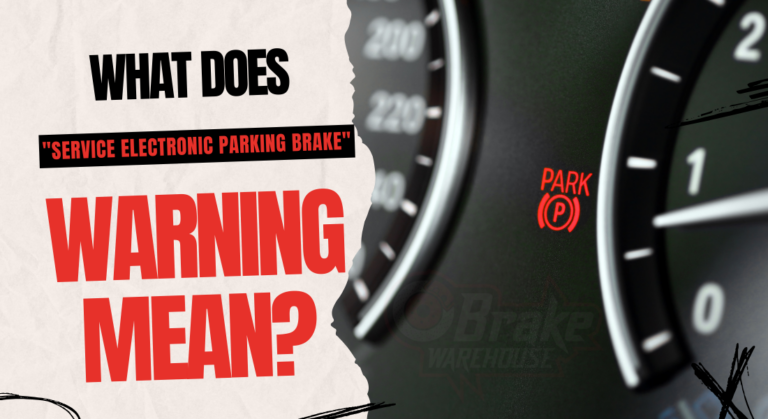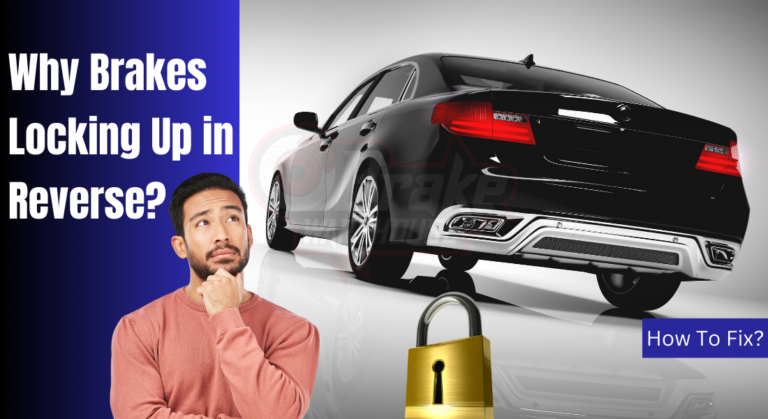Why Brakes Pulsating after New Rotors?(3 Reasons To Check)
We all expect a smooth and consistent stop after pressing the brake pedal. So, when you instead feel a pulsating sensation even after installing new rotors, be sure that something is wrong. So, why brakes pulsating after new rotors?
Brakes can pulsate after installing new rotors due to improper installation or issues with ABS engagement and braking components. Improper installation, like uneven torque on wheel nuts or caliper bolts, can lead to rotor distortion and pulsation. Additionally, defects in the braking components can also cause pulsating after new rotors.
This comprehensive guide explores the causes and solutions for brake pulsation after new rotors. Also, you will learn valuable tips to prevent recurrence for a smoother and safer driving experience.
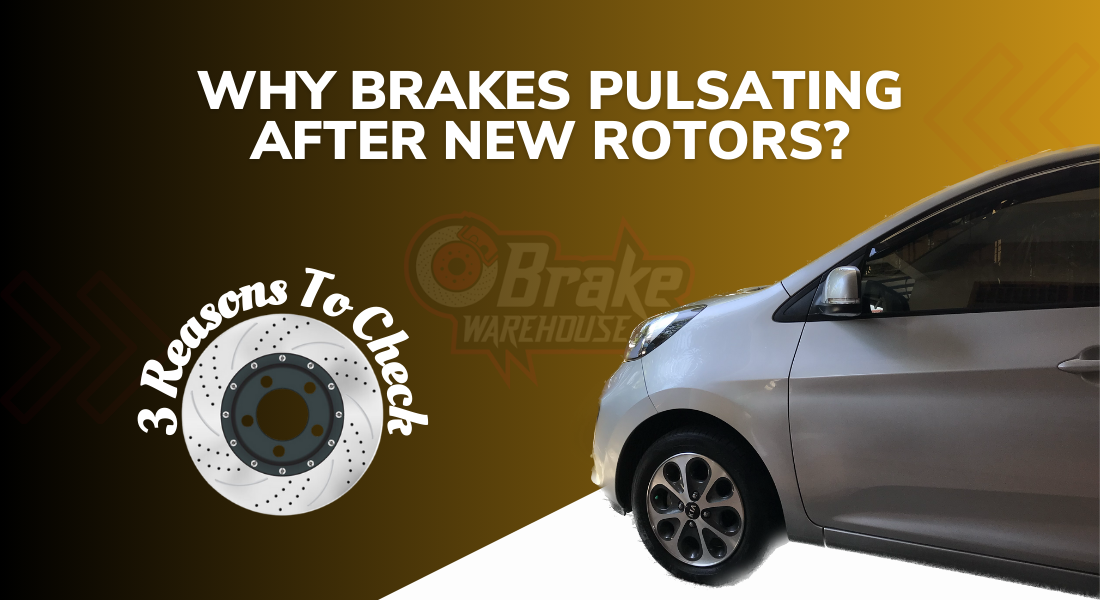
Why Brakes Pulsating after New Rotors?
As stated, many problems are culprits. Here I shared the common causes with solutions for your convenience.
ABS (Anti-lock Braking System) Engagement
During sudden braking, ABS prevents wheel lock by modulating brake fluid pressure to calipers. This might feel like pulsation, but it is a safety feature, often misconceived as brake issues. Many mechanics term it a “brake pulsation myth.”
However, certain situations warrant attention. If ABS activates during regular braking, it causes pedal pulsation, accompanied by grinding noises and warning lights (ABS, Traction control, ESP BAS) on the dashboard. In this case, it may signal an ABS sensor or wiring problem.

Regrettably, a prevalent source of brake vibrations, pulsations, or grinding issues is also why they persist post-repair. Improper installation of brakes, rotors, calipers, and wheels exacerbates the problem. These components demand meticulous installation due to tight tolerances, as even a slight misalignment can lead to severe damage and brake failure.
Solution
To ensure proper handling, follow the below guidelines when reinstalling parts and wheels after servicing:
- Precise Measurements: Accurately measure clearances for replaced components.
- Debris Removal: Clean new parts thoroughly before installation.
- Rotor Surface Preparation: Enhance braking friction by applying a non-directional rough finish to rotors using sandpaper.
- Torque Wrench: Utilize a reliable torque wrench during assembly.
- Proper Wheel Nut Tightening: Torque wheel nuts in a star pattern and in two-step increments.
- Lubricant Caution: Avoid lubricants during torque measurement to prevent inaccurate readings and over-tightened nuts.
- Rust Removal: Thoroughly clean and eliminate rust from reused parts to minimize friction and grinding.
- New Hardware: Always employ new hardware when servicing your vehicle.
Read Also: Why Steering Wheel Shake after New Brakes and Rotors?
Defective or Worn Caliper Guide Pins

The guide pins and slides enable the caliper to move back and forth when the brake pads come into contact with the rotor. This back-and-forth motion ensures an even distribution of pressure on both pads.
However, when these pins and slides wear down, the caliper no longer applies brake pressure evenly to the pads. This leads to an imperfect seal against the rotor, causing the rotor to flex. The result is the pulsation in the brake pedal and the steering wheel.
Solution
Address the issue following the below points
- If the guide pins and slides are significantly worn, replacing the entire caliper is essential.
- At a minimum, you should replace the pins. Additionally, when replacing the caliper, carefully inspect all rubber boots and seals for any signs of damage and replace them if necessary.
- Before installation, lubricate the new pins and slides with high-temperature brake grease.
- Finally, torque the caliper mounting bolts to the specified specifications for a secure and safe installation.
Defective Components in the Braking System
Flaws in your components can contribute to brake pulsation. Prioritize checking rotor flatness during installation to prevent future complications.

Ensure cleaning parts and using new hardware for secure fits. It helps in preventing subsequent damage and grinding. Confirming proper alignment and clearance for all parts significantly contributes to vehicle well-being.
Read Also: How Do You Remove Orange Rust from Brake Rotors? (2 Ways)
How to Diagnose Brakes Pulsating after New Rotors?
Diagnosing brakes pulsating after new rotors is vital. Otherwise, solving the issues becomes challenging. Here’s how to diagnose and fix it:
Perform a Brake Test
- Find a smooth, open area to accelerate to 15-20 mph.
- Gently apply the brakes while maintaining a straight line.
- A regular pulsation underfoot suggests a warped rotor.
- Steering wheel vibration during braking likely originates from the front rotors.
- Vehicle or seat vibrations are more likely from the rear rotors.
Jack Up the Vehicle, Listen, and Observe:
- Lift one wheel at a time, spin it, and listen for differences.
- A slight grinding noise or resistance in one wheel may indicate the problem.
Visually Inspect the Brakes:
- Look for signs of excessive heat on the brakes.
- Compare brake conditions; significantly worse conditions hint at the problematic rotor.

Read Also: Brake Pad Rubbing On Rotor While Driving – How To Fix?
How to Fix a Pulsating Brake Pedal?

Follow the below steps to fix pulsating brake pedal.
Step 01: Consider changing the brake pads, which are usually cost-effective.
Step 02: Resurfacing rotors may work for mild warping but can be temporary.
Step 03: Ensure the replacement rotor matches your vehicle; consult your manual or a mechanic.
Step 04: Installation can be complex; professional assistance is recommended.
Step 05: If DIY, follow instructions meticulously and gather the necessary tools.
Step 06: After installation, test the brakes at low speeds, gradually increasing to normal feel.
Successfully fixing a pulsating brake pedal requires careful diagnosis and proper replacement.
Read Also: What Causes Grooves in Brake Rotors – How To Prevent It?
How to Prevent Brake Pedal Pulsation:

Maintaining your car, particularly your brakes, is often avoided by car owners. As a result, owners experience problems in the brakes like pulsation.
Here are key factors to prevent brake pedal pulsation:
Regular Inspection and Maintenance
- Consistent brake maintenance is essential for preventing brake pedal pulsation and ensuring your car’s optimal performance.
- Schedule annual brake inspections to identify issues and promptly maintain your vehicle’s top condition.
- If you notice handling anomalies, prioritize a prompt brake inspection to address potential problems, prioritizing your safety.
Responsible and Smart Driving
- Driving responsibly is vital to reduce strain on your car.
- Avoid sudden, hard braking, which wears down brakes and other car components and raises brake temperatures significantly.
- Practice gradual deceleration rather than abrupt stops to safeguard your brakes and minimize this issue.
- Gradual braking extends brake life and maintains its peak performance.
FAQs
What signs indicate the cause of brake pulsation after the new rotor installation?
Signs pointing to the cause of brake pulsation after new rotor installation include
- Uneven rotor wear patterns
- Visible scoring or damage on the rotors
- Improperly torqued wheel nuts
- Unevenly tightened caliper bolts
- Issues with brake pad seating
Is it normal for brakes to pulse after installing fresh rotors?
No, brakes are not normal to pulse after installing new rotors. Brake pulsation typically indicates an issue with the braking system, such as uneven rotor wear, improper installation, or other underlying problems. Properly installed and balanced new rotors should provide smooth and consistent braking without pulsation.
Can improper rotor installation lead to brake pulsation with new rotors?
Yes, improper rotor installation can lead to brake pulsation with new rotors. Common installation errors like uneven torque on wheel nuts, or inadequate lubrication of critical components can result in uneven braking forces and rotor distortion, causing the brake pulsation issue.
Read Also: When or How Often to Replace Brake Rotors?(Common Signs)
Wrap Up
Brakes pulsating can pose both inconvenience and potential danger. It is crucial to know why brakes pulsating after new rotors and address this problem early to ensure safety for yourself and fellow road users.
Regular inspections and maintenance can help you effectively manage and prevent the problem.

Meet Zayan, the mechanical genius behind the highly acclaimed brakes problems and solutions website. With over a decade of hands-on experience in the automotive industry, Zayan has become a trusted authority in the realm of brake systems.
His passion for cars, coupled with his expertise in solving complex brake-related issues, has earned him a devoted following of car enthusiasts, mechanics, and everyday drivers seeking reliable guidance.

